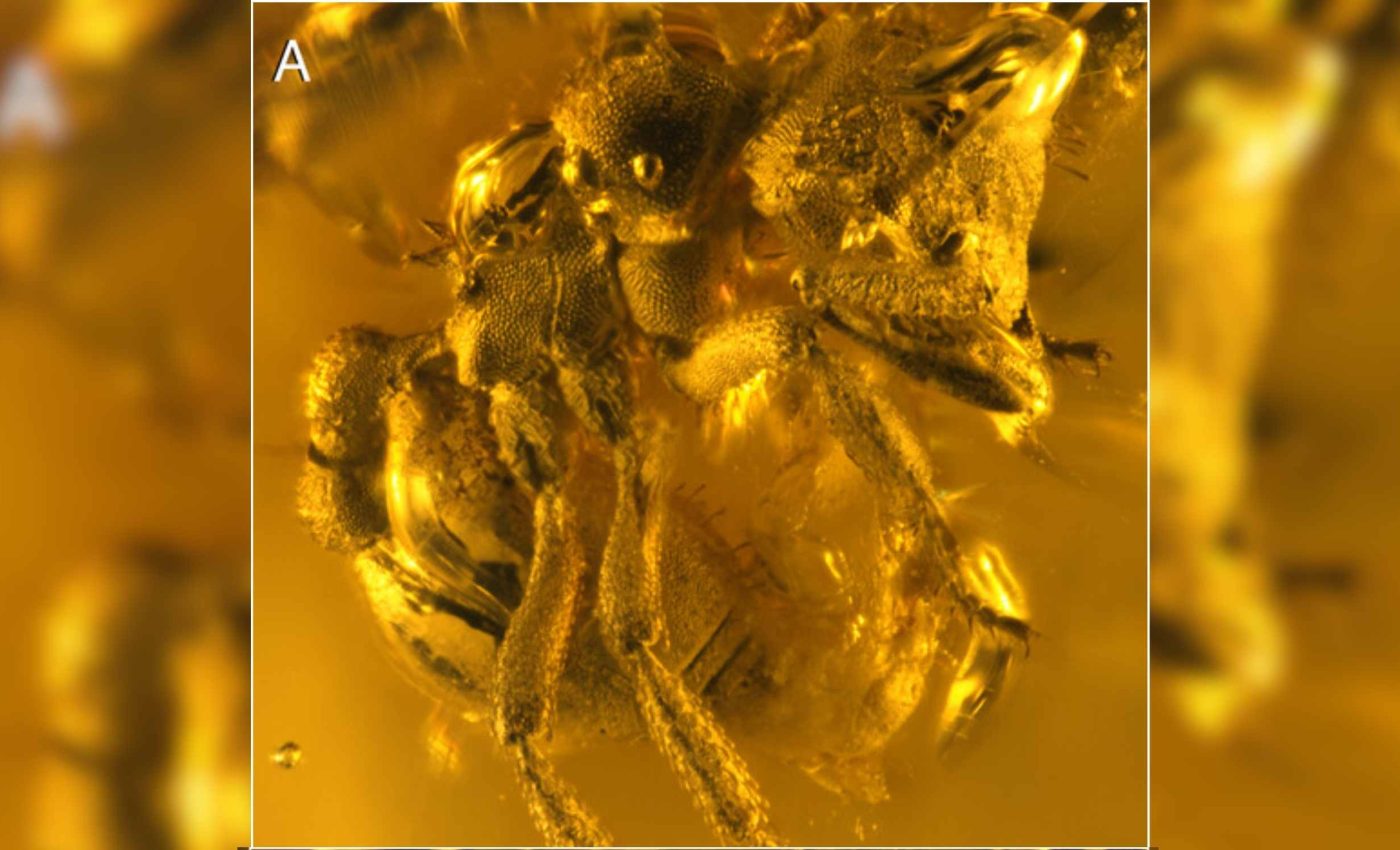
Scientists find ant fossil is so rare they compare it to finding a diamond
A new study describes a tiny Caribbean dirt ant trapped in Dominican amber for about 16 million years. The find shows that this stealthy ant group once lived on islands where none exist today.
The fossil belongs to a newly named species, Basiceros enana, and it shifts the map of where these ants used to roam. It also hints that their trademark camouflage toolkit was already in place long before humans existed.
Tiny worker Basiceros enana
The fossil is an adult worker preserved in amber from the Dominican Republic, and it is noticeably smaller than its modern relatives. At roughly 0.20 inches long, it stands as the smallest known member of its family.
This single specimen confirms that Basiceros enana once lived in the Caribbean, then disappeared from the region sometime after the Miocene. The discovery tightens the timeline for when that local loss likely happened.
Lead scientist Gianpiero Fiorentino of the New Jersey Institute of Technology (NJIT) led the work. His team combined imaging and comparative anatomy to position the fossil on the ant family tree.
“Dirt ants are rare finds in the wild. Finding one today is exciting given how well they stay hidden, but captured in amber, it’s like finding a diamond,” said Fiorentino.
How camouflage works
The fossil reveals features tied to crypsis, the ability to avoid detection by blending in with the background. Dirt ants mask themselves with soil and leaf fragments so they look like the forest floor.
Two types of setae, short hairlike bristles that help trap particles, cover the ant’s head and legs. Longer brush hairs snag bits of debris, while shorter holding hairs press that debris against the surface.
Researchers used micro-CT to capture details hidden by the amber. This technique is well suited to fossils sealed in resin.
The team analyzed shape features across all living dirt ant species and aligned them with DNA based timelines. That mix of traits and genes helped fix the fossil’s place in the group.
Basiceros enana rewrites the map
Today, living Basiceros species occur from parts of Central America into South America. The Caribbean fossil shows the group once stretched farther north onto island terrain.
This island record also means Basiceros enana experienced biogeography, the study of where species live through time, that was more complex than it looked. A single island fossil can change how scientists retrace ancient ranges.
Dominican amber, fossilized tree resin that entombs organisms, formed during the middle Miocene, a time of shifting sea levels and changing habitats. That age lines up with a period of local extinctions seen in other island groups.
How ants first reached these islands is still debated. Some scientists point to short lived land connections, while others argue for over water dispersal aided by storms, rafts of vegetation, or stepping stone islands.
What size says about survival
The fossil worker measures about 0.20 inches, while some modern dirt ants reach about 0.35 inches. That gap helps test how body size changed as the lineage diversified.
The new analysis indicates size likely increased quickly after an initially small ancestor. That pattern runs against earlier ideas that dirt ants started large and then shrank.
The fossil shows triangular teeth along the mandibles that suit a predatory role. That matches the secretive lifestyle known in living relatives.
It also bears a propodeal spine, a small rear body spike that anchors muscles and armor. Features like a trapezoid head and specific leg shapes support its identity within Basiceros.
Lessons from Basiceros enana
Fossils like this give snapshots of vanished communities. Each specimen helps connect living species to lost branches of their family lines.
They also test ideas about how island ecosystems gain and lose predators. When a stealth predator disappears, prey communities can change in subtle ways that echo for ages.
Micro CT exposes delicate structures without harming rare fossils. That is vital when a specimen is one of a kind and cannot be replaced.
Beyond pictures, 3D models let researchers measure angles, lengths, and surfaces accurately. Those data feed comparisons across species and support evolutionary timelines.
Local extinction on islands is a warning sign. It shows how sensitive specialized predators can be to habitat shifts and competition.
Understanding when and why those losses happened gives context for today’s conservation tradeoffs. It also helps forecast which lineages might be at risk when climates and coastlines keep changing.
The study is published in Proceedings of the Royal Society B.
—–
Like what you read? Subscribe to our newsletter for engaging articles, exclusive content, and the latest updates.
Check us out on EarthSnap, a free app brought to you by Eric Ralls and Earth.com.
—–













